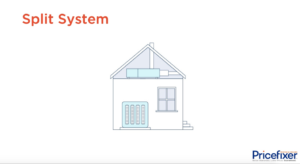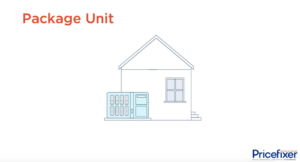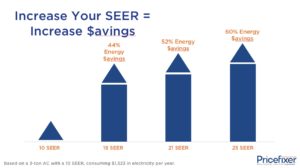AFUE: The Five Essential Questions Your Service Company Should Ask You Before You Buy In
Right here, we have all the answers to your questions on AFUE, including a quick video on Ron’s Story, the five essential questions you should be asked before your job is priced, and US Department of Energy guidelines that will help you along the way. AFUE can be confusing at first, but once you are armed with the knowledge you need to make an informed decision tailored to your specific situation, you will feel empowered.
“The Five Essential Questions Your Service Company Should Ask You Before You Buy Into AFUE” includes –
- A Brief Overview of AFUE
- Ron’s Story/Quick Video Explanation
- The Five Essential Questions
- How?
- When?
- What?
- Are? and…
- Did?
- US Department of Energy
- Understanding ENERGY STAR
- Your furnace or boiler (Do you need to buy the same equipment you have?)
- Get a free quote instantly, without a tech visit to your home
A Brief Overview of AFUE
When you’re on a quest for information about AFUE you’re most likely in the fact-finding phase of HVAC replacement or repair. HVAC stands for Heating, Ventilation and Air Conditioning, which not many are aware of, and refers to the heating and cooling industry as a whole. So, let’s discover the meaning of AFUE together and start a discussion on why it’s important to have a clear comprehension of what it is. Additionally, what are the questions you need answers to before you make any decisions about your home heating system? In this blog post, we have the five essential questions your service company should ask you before you buy into AFUE. If they don’t ask you these questions or haven’t asked you them yet, you may want to consider a second opinion on your furnace or boiler diagnosis.

AFUE is a commonly used acronym within the HVAC industry. The Annual Fuel Utilization Efficiency is a percentage that expresses the amount of heat you will benefit from throughout your home versus the amount that will escape through the flue.
Wait, what?!
Yes, something has to keep the birds warm. (You can insert your smile here.) It is true, the heat escaping through the flue from lower efficiency equipment is a major ouchie for your heating bill. The good news, though, is the higher efficiency level your equipment is, the less fuel you will literally “lose to the birds.” That might mean you pay more money for a furnace up front, but over the lifespan of your system, you’re spending less on fuel.
The heat produced by your furnace in correlation to the level of fuel used is the AFUE. Some older homes have furnaces with extremely low or even unmeasurable levels of AFUE, which means those homeowners are spending much more money on fuel than recommended by US government agencies like the Department of Energy. New Energy Star rated equipment is rated between 80-98% AFUE, as opposed to older homes with no AFUE rating on their equipment at all. Homeowners with much older systems waste a lot of fuel to these lucky (and warm) “birds” we are referring to.
Upgrading to a new system can save you a lot of money on fuel, which means you will be getting more bang for your buck, but how will you know whether its time to replace your furnace or simply repair it??
Before you even get to this decision-making step, there are a few questions your service company should ask you as a homeowner in a time of need.
Here’s a quick tip to keep in the back of your mind throughout the process. As of the year 1992, the US Department of Energy set the standard that all furnaces sold in the US must be minimally 78 AFUE. Other specific types of furnaces have different standards, and as of 2015, even higher levels of AFUE are required between 80-83 AFUE. So, to comply with these standards, when purchasing new equipment should operate at this efficiency level.
If you’re looking for a deeper dive into the meaning of AFUE, there is a plethora of information on the What is AFUE post. Click Here.
Ron’s Story
Learn more about AFUE and the Five Questions Your Service Company Should Ask You By Watching THIS VIDEO about Ron’s Story.
As some of you can relate, Ron’s story is not uncommon to those with older homes. But like Ron, you, too can take this crash course on heating terminology and get yourself up to speed to make an informed decision. With that in mind, we’ve curated a list from industry experts on the top 5 questions you have to listen for… Your service company should be asking you these 5 questions, and if not, perhaps it’s time to make sure they know your answers.
The 5 Questions
- How frequently do you operate your furnace? Is it running year-round, or is it running more seasonally, or occasionally?
- When did you move into your home and how long do you plan to stay put?
- What is your budget for a new heating system?
- Are you aware the repairs on a higher AFUE heating system are more expensive than on a minimally required AFUE percentage?
- Did you know you can cut out added costs by shopping online for your ideal AFUE system?
These questions lead to your system diagnosis and a recommendation or repair or replace. Please bear in mind, however, that if your system is 10 years or older, most will advise you to replace.
Many sales people will tell consumers that they’ll save a lot of money by installing a high-efficiency furnace. But if you’re replacing an older furnace that has an AFUE rating between 55-70%, then installing an 80% AFUE furnace will already be a substantial upgrade, and you will immediately see a huge savings on your utility bill.
If you plan on living in your home less than five years, the payback time period may not be enough to justify the additional cost of a high efficiency furnace if you buy from a contractor.
The distribution channel for furnaces consists of a manufacturer, distributor, and then a dealer (the installing company). Each channel adds a markup. The dealer usually adds a 100% markup. Costs vary, but compared to an 80% furnace expect to pay $1,100 dollars or more for a 90% AFUE furnace. A 95-99% AFUE furnace will probably cost you between 150-200% more than an 80% AFUE furnace.
When they ask about your budget, just be honest. What do you expect a new system to cost? What about a repair? The thing you must know here is that the repairs on a more efficient system, or – one with a higher AFUE, will cost more money than they will on a lower AFUE system.
That brings us to the final of the five essential questions your service company should be asking you before you repair or replace. So, here’s a question or two for you to ask yourself. Are you a sharp, smart consumer? Do you pride yourself in seeking knowledge before you invest your money in a large purchase? If yes, then you will be rewarded by arming yourself with information and seeking pricing for HVAC replacement equipment online. This is a great way for you to see a real breakdown of what you should expect to pay for a replacement.
Understanding ENERGY STAR
When you are looking for information on energy efficient equipment to replace your existing system or occupy a new home, you will want to have a concise understanding of government standards. ENERGY STAR certified, guaranteed products are not only good for you and your home, they have beneficial-for-the-environment operational standards. They meet strict criteria in order to carry this label. For detailed information on products that carry the label, you can visit their website (Link to: energystar.gov ).
Here are a few criteria furnaces must meet in order to carry an ENERGY STAR label:
Gas furnaces in the southern United States must be a minimum of 90% AFUE. In the northern parts of the US, gas furnaces need to operate at 95% AFUE (as a minimum efficiency level standard). Oil furnaces must have an 85% or higher AFUE rating. For a specific breakdown of the US states per region, please click here.
Your furnace
As a general rule of thumb, if your equipment was or is heating your home comfortably, it is the proper size you’ll need for a replacement. You can search the model number written on the product tag online to see what type of system you have.
Money conscious consumers who want to avoid paying a retail markup are encouraged to get a bid and compare online at Pricefixer.com. At Pricefixer.com there is never a retail markup, or commissions paid to sales people that drive up the price – just complete transparency and the guaranteed lowest prices on central heating. Search for replacement equipment in the comfort of your own home or office, or from the library, or from Starbucks, or the car! You can access the information you need on your phone or tablet, on-the-go or on your couch. Call or chat if you have questions.
Now that you know the essential questions your service company should be asking you – what are you going to do to resolve your home or office heating woes?







